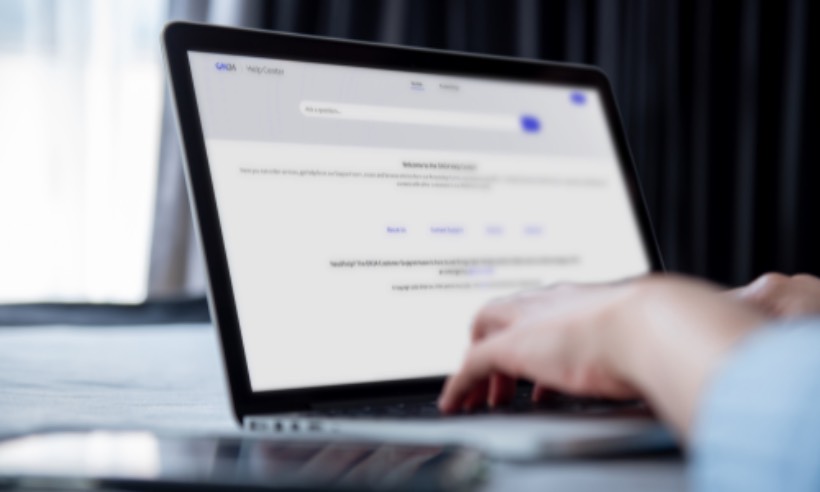5 Digital Event Promotion Rules You Should Break

When it comes to digital event promotion, marketers usually turn to two tried and true channels: email and social media. And while these tools do have value, they often blind marketers to other valuable channels and tactics that can drive results.
That is because marketers have created their own rules around digital event promotion. Rules that need to be broken.
Read on to learn more about the five digital event promotion rules you need to break.
Rule 1. That Content Syndication Is Only for Whitepapers

There is no reason why static, copy-heavy content like .PDFs should get the lion’s share of third-party syndication. In fact, sharing .PDFs to a largely unknown audience does little to identify who’s actually interested in your services and why they may be interested.
To reach audiences who don’t know you but who are looking for your solution, you need a content syndication program that empowers audiences to engage with your brand.
This means syndicating more than just the whitepaper or e-book — it means syndicating digital events, webinars and interactive experiences that open direct channels between your brand and your audience.
First, Align Your Syndication with The Buyer’s Journey
From the customer’s point of view, the buyer’s journey starts by trying to understand what they should look for in a solution. Most of their research cycle is happening on trusted third-party sites where they’re reading product reviews.
To reach these potential buyers, you should produce webinars for syndication on these sites.
But why?
Because, today, first-party data is often far more valuable (and accessible) than signals gathered by third-party vendors.
Why First-party Data Is Essential to Marketers Today
First-party data is data collected directly from an audience or prospect who agreed to interact with your brand on a digital channel. This data provides professional information and gives you insights into actual interest in your solutions.
This type of data empowers you to collect real-life, real-time information about what kind of content your buyer prefers when they consume it and what they will consume next.
Crucially, first-party data gives your sales team the information and context it needs to continue conversations and drive deals.
Don’t Forget On-Demand
Just as there’s no limit to the variety of content formats you should syndicate, there’s also no limit to the seasonality of that content. For instance, if you’re syndicating webinars, make sure you’re also promoting additional on-demand content like e-books, content hubs, webinars and virtual events.
There is no linearity to the buyer’s journey anymore. Build your content program to satisfy readers at every buying stage so that they can shop around and self-select while they research.
Rule 2. That Digital Event Promotion Is All About Volume

It doesn’t matter if a webinar has 3,000, 300 or 30 registrants. What matters is the quality of your audience. The question you must ask yourself is: are you attracting high-interest prospects?
Keep these tips in mind as you start your promotions:
-
- Personas aren’t enough to build your digital event promotion list. Aim for the person using any first-party data acquired from third-party sites or ad targeting campaigns.
- Filter for job area, function and level. You want to build a relationship with the buying committee, not someone who’ll ignore your emails.
- Deploy an account-based approach. Know your key accounts? Focus on driving engagement exclusively with their buying teams.
You don’t want everyone to show up for a bottom-of-the-funnel event. You only want those interested in your brand and have enough skin in the game to ensure that they find a solution to their problem.
Rule 3. That Third-Party Lead Delivery Is Stagnant

Digital event promotion is about scaling both leads and lead processing. If you don’t scale the latter at the same rate as the former, your lead flow will slow or even become static — meaning you’ll have diminishing returns even as you increase the number of leads by 10x or even 100x.
This is why it’s hard to master information coming from third-party data vendors: you have a lot of leads you need to sift through before you can gain any traction with realistic prospects.
But buyer engagement platforms like NetLine can help. These solutions work by creating a dynamic lead flow from third-party sites. They put your content in front of relevant, in-market audiences and connect your brand with actively interested audiences.
Buyer engagement platforms can also integrate neatly within your tech stack. As a lead engages with your content, your team can seamlessly collect first-party data and effectively nurture audiences faster.
No more wasted window, no more stagnant list. With dynamic lead flow, lead processing is no longer a problem at scale because every lead is tended to automatically and with purpose.
Rule 4. That Third-Party Channels Are Just for Lead Acquisition

There are a lot of professionals out there seeking to buy solutions and, as a marketer, it’s your job to find them. To reach these audiences, third-party sites and syndication is invaluable.
But the need to use third-party channels has created an unfortunate myth: that these sites are only good for lead acquisition.
This is wrong.
You should treat third-party sites as an additional channel in your marketing mix and provide them with content intended for audiences at every point in the funnel.
For example, current customers.
Customer-targeted content is valuable for software companies because they’re constantly adding to their solution portfolios. If your customers are searching for a solution to a new problem, what better way to meet them than with your new solution on an external site they trust?
Content hubs with evergreen, dynamic content is also a great format for delivering rich content to your customers on paid channels. Here are a few types/functions of content to include in a syndicated content hub (which can also be mirrored on owned channels with ABM tactics):
-
- Thought leadership
- Educational content
- Solution-oriented
- Demos
Each content type performs a function for both customers and prospects across the buyer’s journey. Customers can even self-select the content they want to enhance their experience with your solution.
Multimedia, interactive content hubs that include webinars and other digital experiences are ideal for syndicated content. They provide your company and its audience the opportunity to effectively and directly communicate on a two-way channel — helping you to identify and accelerate deals.
Rule 5. That Buying Intent Comes From An Algorithm

The best way to recognize, register and act on buyer intent is through content that empowers audiences to interact with you. This content can be delivered directly from your website or from a third-party syndicator.
Why is interaction important? Because it helps you understand who your audience is by letting them directly tell you.
When you know exactly who your audience is, what types of content they like, and what they’ll then do with that content, you can plan campaigns genuinely for them, tailoring your digital event promotion according to their needs and wants. You’ll no longer keep running iterations of the same campaign to that same large segment hoping that one converts significantly better than the others.
For example, NetLine has a free tool called Audience Explorer to help B2B marketers discover the real-time content consumption behavior of their target audience. It’s a good first step in identifying and appreciating the invaluable data that comes from building content programs from first-party data vs. an anonymous black box.
When you have a complete picture of a person instead of a persona, you can anticipate and integrate their next step into the content campaign. Even though the buyer’s journey isn’t linear, most prospects will still require the same bottom-funnel actions: case study, demo, call.
When you know how deep the user is, you can seamlessly provide these content types and opportunities at just the right moment.
Final Thoughts
You spend budget, bandwidth, and time on creating the best digital events that you can. You would never waste that investment on a stagnant and one-dimensional digital experience for prospects and customers, so why impose such rigid rules on promoting that event?
Use first-party data to create a full-funnel, two-way, on-demand experience before, during and after your digital events. Elevating your digital event promotion is key to the overall success of the event.
Remember: content gurus are actually audience gurus.

